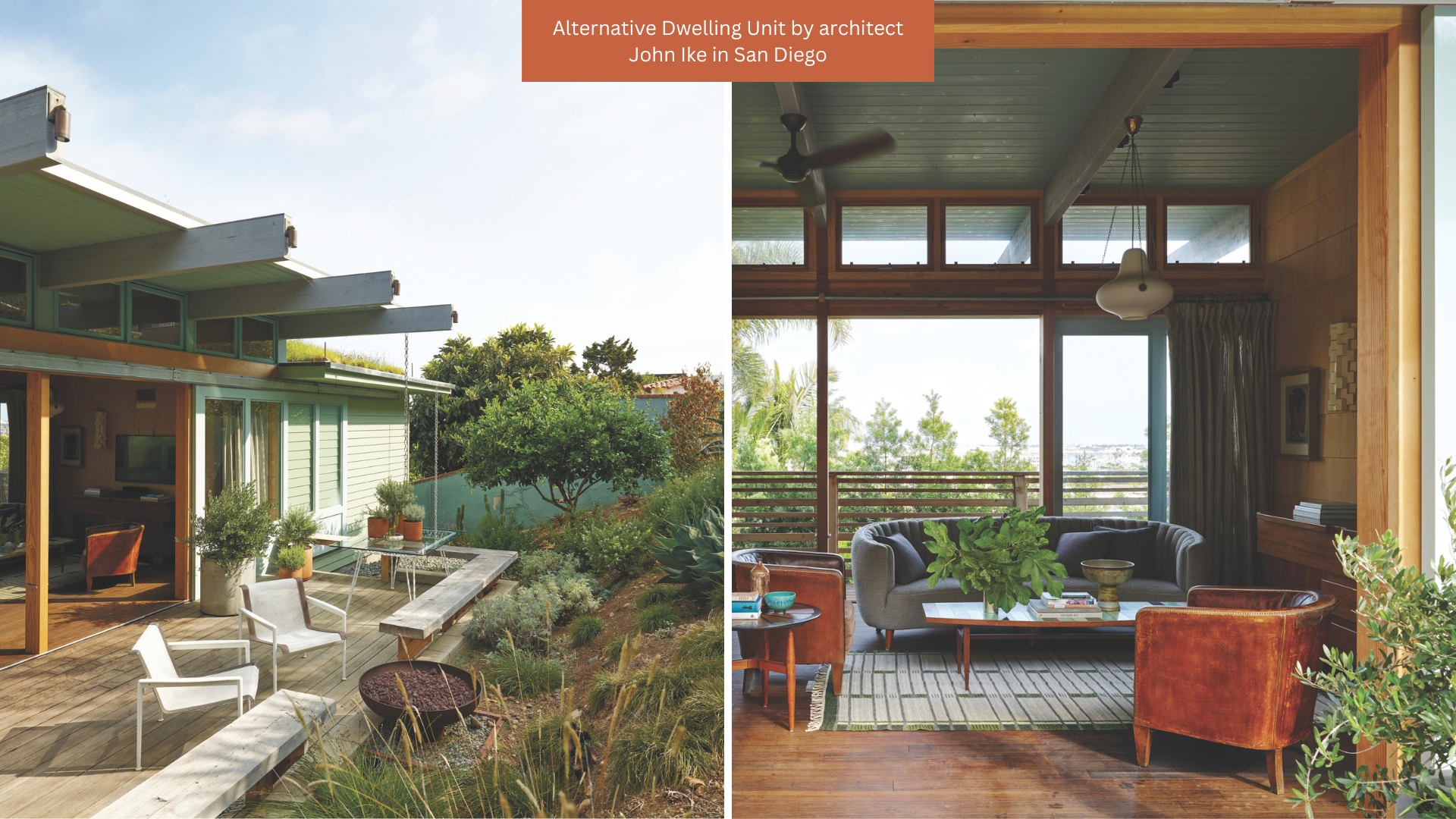By: JEAN NAYAR
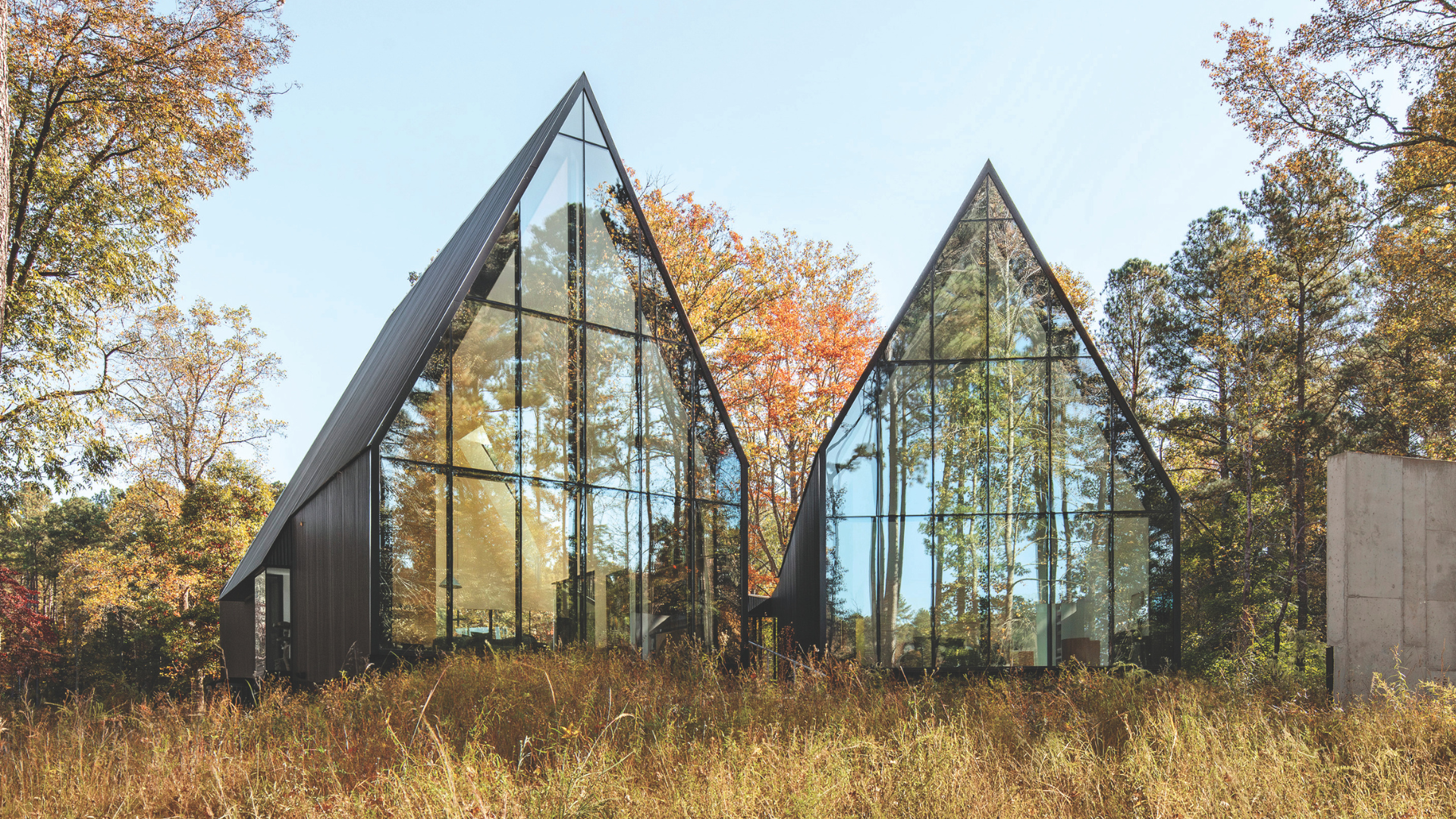
Small in size but big on personality, a collection of not-so-large homes highlights why the demand for modestly scaled dwellings is on the rise.
An explosion of interest in the “tiny house” movement has ignited the imagination of Americans from every walk of life in recent years.
Makers of these miniature marvels tout the plusses of compact living in houses with diminutive footprints—usually less than 600 square feet. Affordable purchase prices, reduced carbon footprints, lower maintenance costs and taxes, and the freedom to pack up and go with minimal fuss are among the many benefits of such structures. A home doesn’t have to be microscopic to reap the rewards of this trend, however. And many architects and builders in Southern California have tapped into the growing interest in smaller dwellings with creative approaches to living large in less space.
Set on a modest corner lot in a well-established neighborhood, the roughly 3,000 square foot dwelling captures ocean views despite its location a few blocks back from the beach. A variety of spacious living areas are packed into three levels, including four bedrooms, an expansive kitchen, a game room and a two-car garage. It also leverages the smallish site with an interior courtyard that maximizes passive house techniques to bring in fresh air and natural light. This creates coveted outdoor living space for the young family of five who live there. “The coastal cities in Southern California often have small lots and a lot of builders of new homes try to maximize them with massive homes that fill the lot,” says architect Lawrence Scarpa. “These large homes are designed with balconies to meet requirements for open space, but they have no yard and tend to be dark without cross ventilation.”
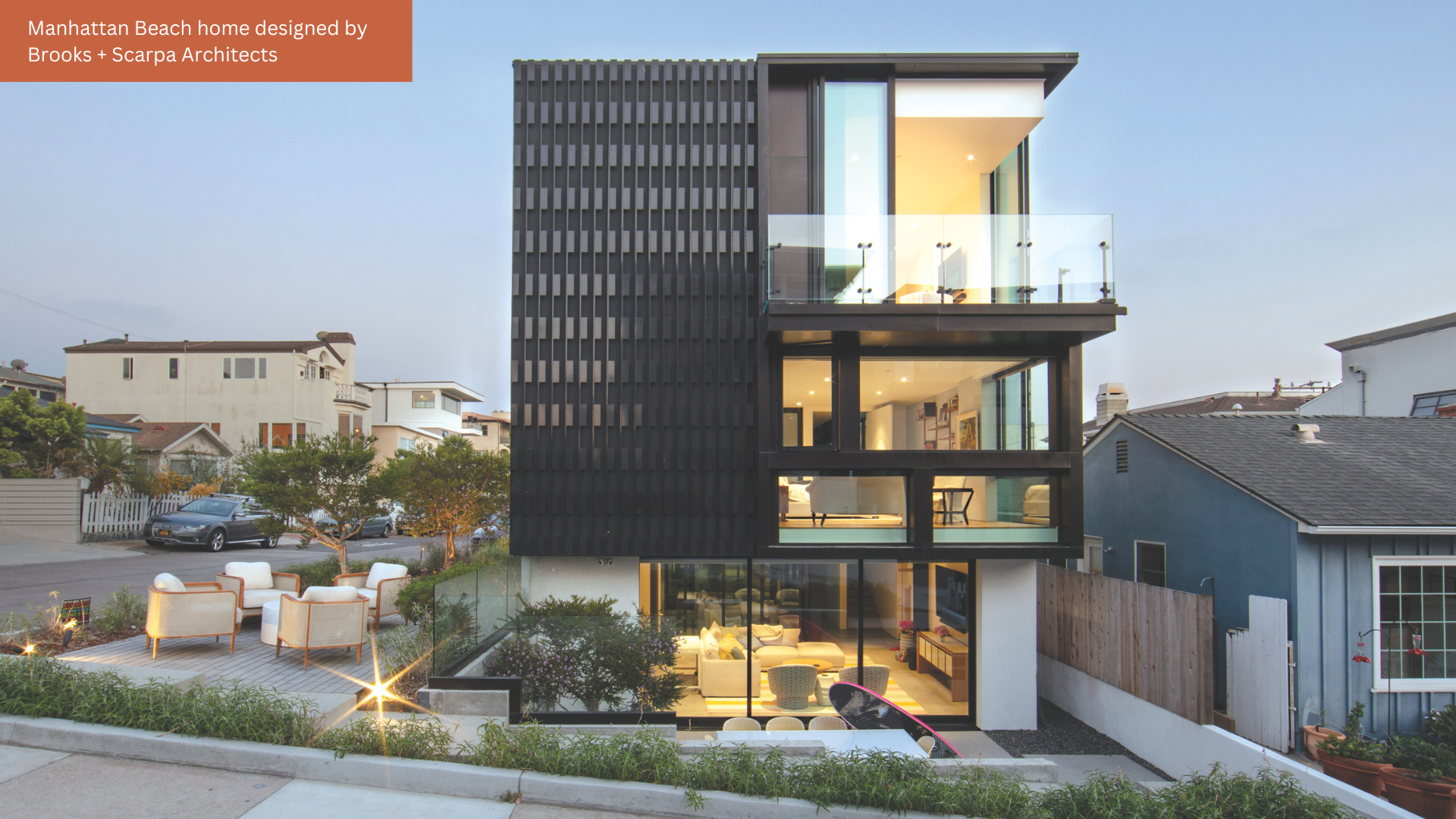
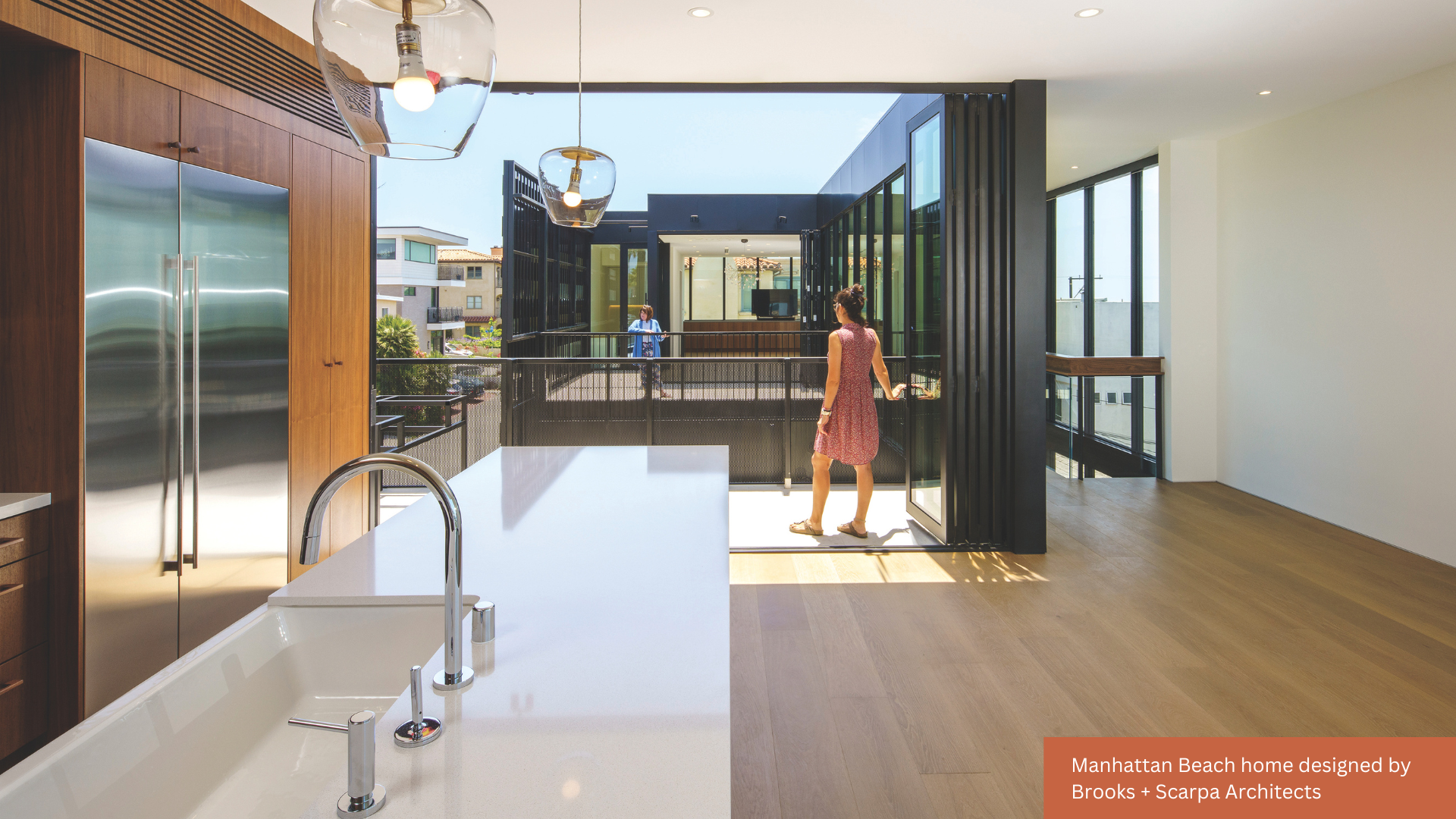
In contrast to that approach, the layout of this home coalesces the open space into a central courtyard. This serves as a ground-level open area, allowing for larger interior rooms and the windows to be placed closer to the water views. “A lot of people are now moving away from the idea of big homes on isolated lots far from the ocean and instead are choosing smaller homes in walkable neighborhoods close to the beach,” says Scarpa, who notes that solar panels on the home’s roof—along with its access to natural light and fresh breezes—minimize energy costs, too. “A smaller house not only costs less to build, maintain, and furnish but it also gives you more choices on how to spend your resources so the quality of finishes can be higher, too.”
The architect’s home in Venice, California, reflects those choices. “I opted for energy-efficient materials as much as possible, so it’s a net-zero house, meaning its energy costs are essentially eliminated,” says Scarpa. By limiting the size of the house to 2,500 square feet—half the size allowable on the lot—he and his family have ample yard space to make the most of the SoCal indoor/outdoor lifestyle. “We have a 5 1/2’ deep plunge pool and a robust garden that we enjoy year round in a walkable neighborhood we love with restaurants, shops, and amenities,” he says. Many feel that such benefits obtain more than balance out any loss of extra space they might get in a larger home farther from the beach. And for those who believe building a smaller house might negatively impact resale value, Scarpa demurs. “You should build what you want to build,” he says. “You’re not creating a dream house for someone else.”
Given the rise in prospective purchasers looking to downsize in Southern California, Berkshire Hathaway HomeServices broker Michael Calcagno concurs. “It’s surprising that so many empty nesters are now looking to downscale massively,” Calcagno explains. “They’re going from 13,000-square-foot homes into places that might be 2,500 square feet in size and moving to communities that are walkable or bikeable with access to culture and the beach.” Often, small-scale mid-century homes—such as his own listing of a one-bedroom, one-bath 919-square-foot cottage with a den on an expansive lot with majestic old trees at 2634 Puesta Del Sol in Santa Barbara—fit the bill ideally for this Boomer generation of buyers. “They’re buying into a lifestyle, where location and outdoor living is key,” says Calcagno. “They want minimal maintenance and the freedom to lock and go to travel or visit grandchildren and they want a home rather than a condo to be independent of the restrictions of an HOA. They’re also drawn to the charm and nostalgia of homes that echo something they might have grown up in.” While such buyers welcome the small-scale footprint typical of such houses (as well as the lower insurance costs), it helps if the interiors are renovated similar to Calcagno’s $2 million San Ysidro Ranch-style listing in Santa Barbara’s historic Mission District, which also boasts easy access to iconic landmarks like the Old Mission, the Rose Gardens, Rocky Nook Park, and the Natural History Museum.
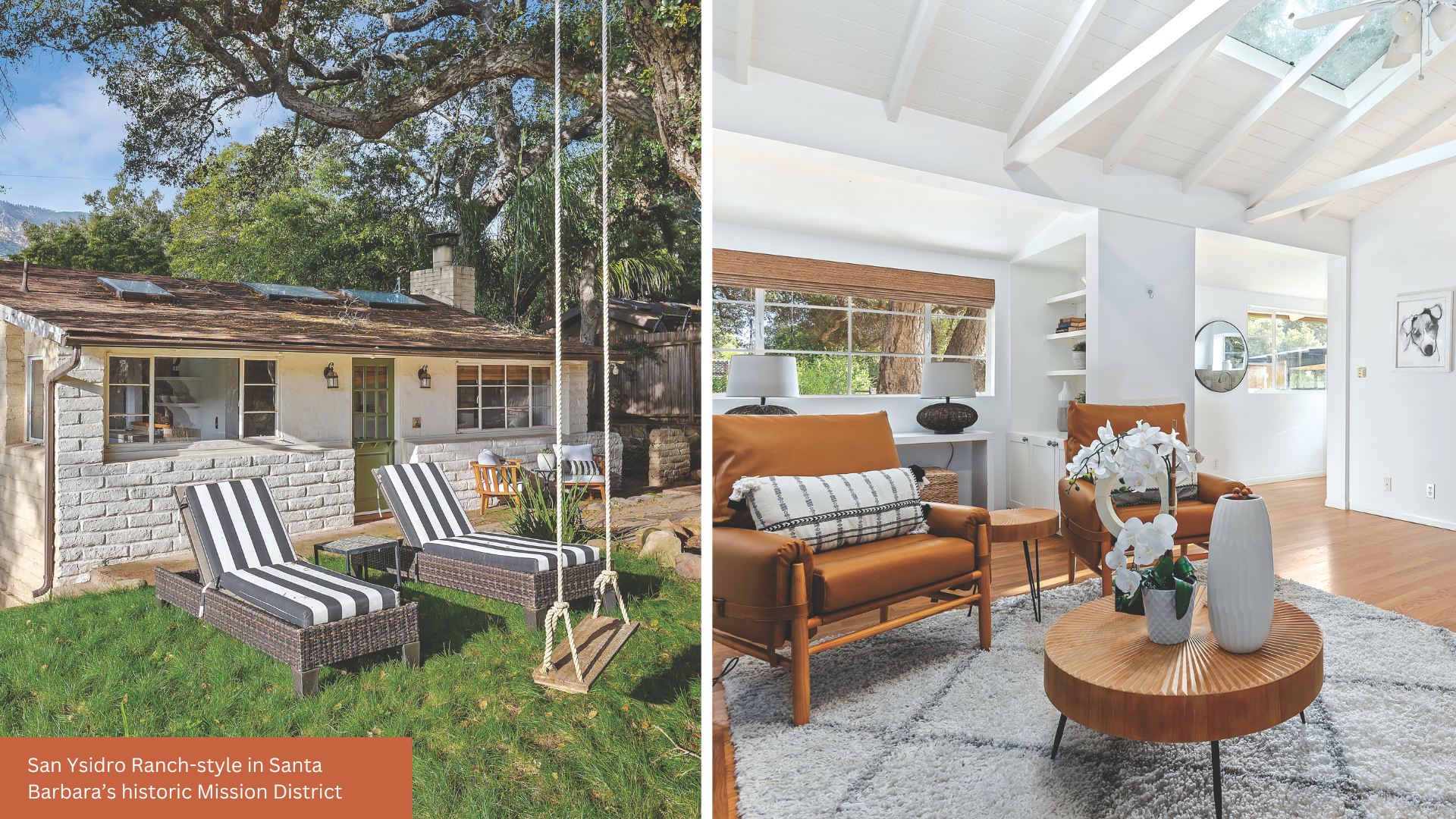
Newer laws in Southern California that reduce restrictions on Alternative Dwelling Units (ADUs)—also known as granny flats, in-law units, or backyard cottages—also make building small-scale houses attractive as an accessory structure to a larger home. An 800-square-foot cottage, designed as an ADU by architect John Ike, a principal of Ike Baker Velten, to complement his San Diego home beautifully reflects the concept. “The homes are like a mother and baby,” says Ike of the main house and cottage. After purchasing and renovating the primary house, which was built in 1947 in a style reflective of the many houses that emerged in the area following World War II, the architect designed the cottage to echo the spirit of the larger home. He completed the interiors with Scandinavian-inspired materials and finishes that give it a sense of modern warmth and personality. “I wanted both to embody the same design vocabulary,” he says.
An inspired layout includes an open living area with sliding glass doors that look onto expansive views to as far as Tijuana and a mountain range to the east, a bedroom, a kitchen, a colorfully tiled bath and a half. Plenty of storage and a series of decks make the cottage comfortable for a variety of uses. “As a young adult, my son lived there for a few years, but now I use it as a workspace separate from the main house, and when we spend time in our homes in other parts of the country, we occasionally rent it out,” says Ike, noting California’s ADU laws aim to increase housing accessibility in Southern California, especially in areas within easy reach to transportation.
With such a broad cross-section of interested buyers and renters, it’s little wonder that modestly scaled homes, both old and new, are among the emerging darlings in Southern California.
